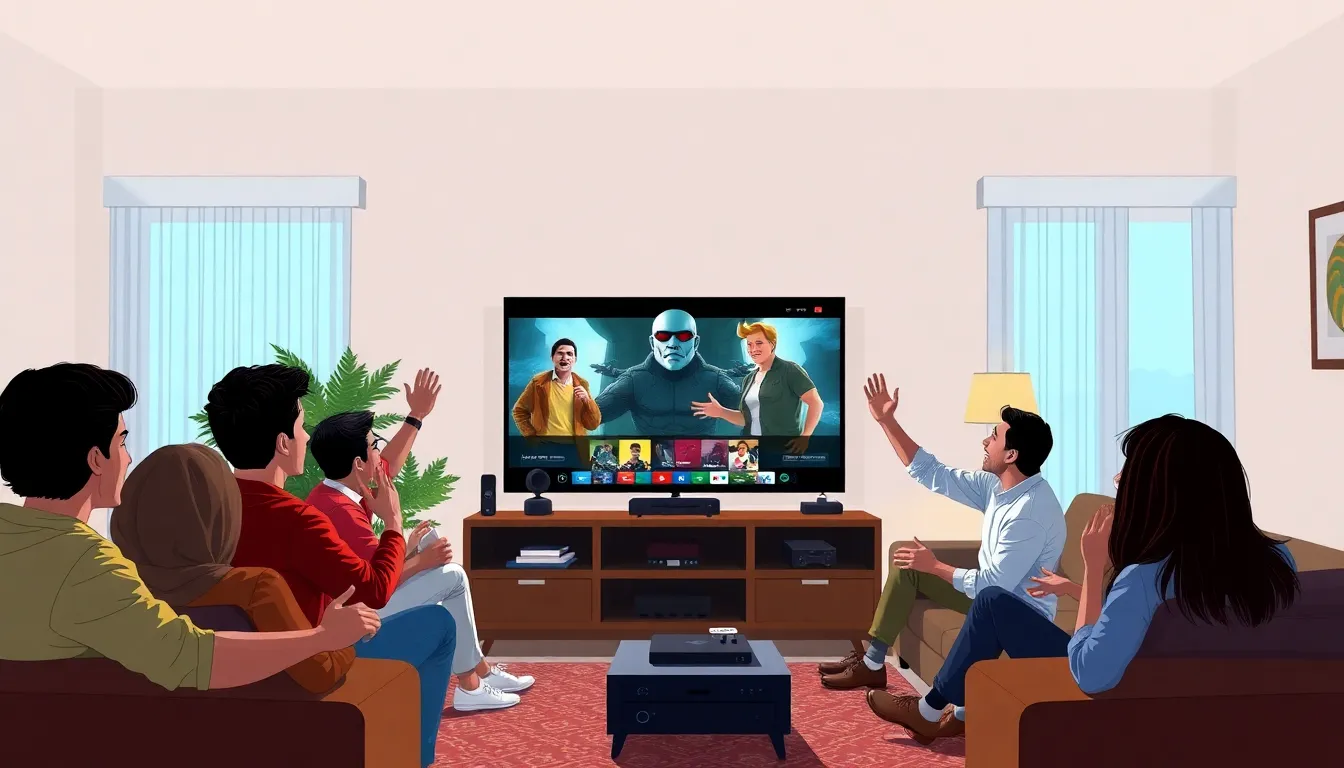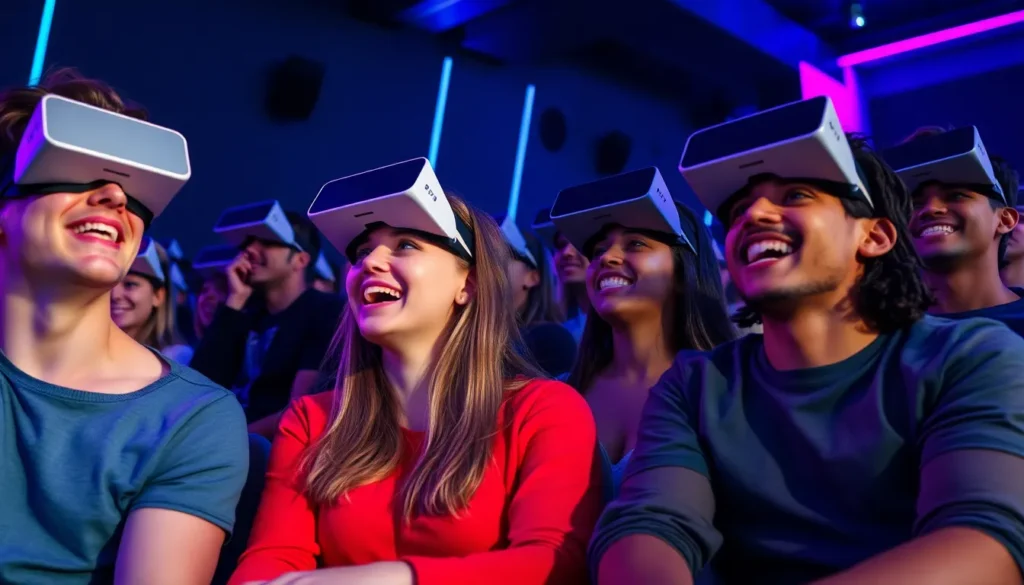As the lights dim and the projector whirs to life, cinema has always been a magical escape from reality. But what happens when the magic meets cutting-edge technology? The future of cinema is not just about bigger screens and fancier popcorn. It’s about immersive experiences that transport audiences into the heart of the action, where they might even feel the heat of a dragon’s breath or the chill of a suspenseful thriller.
The Evolution of Cinema
Cinema’s evolution reflects both cultural shifts and technological innovation. It’s a journey marked with notable milestones that transformed how films are created and consumed.
Future Of Cinema
Silent films dominated the early 20th century, captivating audiences with visual storytelling. The introduction of sound in the late 1920s revolutionized the industry, with movies like “The Jazz Singer” leading the way. Color films emerged in the 1930s, enhancing the visual appeal through vibrant imagery. The 1950s saw the rise of widescreen formats, offering audiences a more immersive experience. Digital projection gained traction in the 2000s, facilitating easier distribution and enabling filmmakers to reach broader audiences.
Technological Advancements
Emerging technologies continue to reshape cinema. 3D technology creates a sense of depth, drawing viewers into the cinematic experience. Virtual reality is pushing boundaries, enabling audiences to engage with stories interactively. High-definition cameras improve image quality, ensuring stunning visuals from both blockbusters and indie films. Streaming platforms have transformed distribution, allowing immediate access to a wide array of titles. Advances in sound design enhance the auditory experience, making films more captivating and engaging.
Current Trends in Film

The film industry adapts continually to cultural shifts and technological innovations. Current trends highlight a transition toward digital realms, immersive experiences, and dynamic viewing platforms.
Streaming Services
Streaming services dominate film consumption. Platforms like Netflix, Hulu, and Disney+ offer extensive libraries, enabling viewers to access a wide range of films anytime, anywhere. In 2023, 82% of households in the U.S. subscribed to at least one streaming service, showcasing a clear shift from traditional cable. Content creation strategies now emphasize original programming, with studios investing heavily in exclusive titles to attract subscribers. Furthermore, data from Statista reveals that streaming services are projected to reach over 1.5 billion subscribers globally by 2025, indicating a significant trend in consumption behavior.
Virtual and Augmented Reality
Virtual reality (VR) and augmented reality (AR) revolutionize cinematic experiences. Filmmakers explore immersive storytelling techniques, allowing audiences to engage with narratives actively. As of 2023, over 40% of filmmakers experiment with VR technology in their productions. Enhanced viewer interaction transforms cinema into a participatory medium, immersing audiences in scenes directly. Additionally, AR applications create unique promotional experiences, blurring the lines between reality and film. Analysts predict the VR market in entertainment will exceed $12 billion by 2025, reinforcing its growing significance in the future of cinema.
The Role of Artificial Intelligence
Artificial intelligence is shaping the future of cinema in significant ways. Its influence spans filmmaking processes and audience interactions.
AI in Filmmaking
AI streamlines various stages of filmmaking. Script analysis tools help writers refine narratives by suggesting improvements. Predictive analytics assist studios in determining potential box office success based on audience preferences. Furthermore, AI-driven editing software enhances film production efficiency. Algorithms can match scenes with appropriate music, creating tailored soundtracks. Additionally, visual effects rely heavily on AI, generating realistic imagery while reducing costs and time.
AI in Audience Engagement
AI transforms audience engagement by personalizing viewing experiences. Recommendation systems analyze viewer behavior, offering curated suggestions based on preferences. These systems keep viewers hooked, contributing to longer viewing times. Sentiment analysis tools gauge audience reactions in real-time, enabling studios to adjust marketing strategies. Chatbots on streaming platforms provide immediate assistance, enhancing user satisfaction. With interactive storytelling driven by AI, viewers can influence plot direction, turning passive watching into active participation.
Changing Audience Preferences
Cinema evolves alongside audience preferences, reflecting demographic shifts and technological advancements. Younger generations increasingly favor interactive and engaging experiences, steering content creation in new directions.
Demographic Shifts
Older demographics remain key consumers, but Gen Z and Millennials lead the charge in embracing streaming services. In 2023, 82% of U.S. households subscribed to at least one streaming platform, signifying a significant departure from traditional cable. This younger audience possesses a preference for on-demand content, prioritizing flexible viewing options and diverse storytelling. As a result, studios pivot toward original programming that resonates with younger viewers’ tastes. Global projections indicate over 1.5 billion streaming subscribers by 2025, underscoring the influence of these shifting preferences.
Interactive Storytelling
Interactive storytelling captures audience attention like never before, with technology inviting viewers to shape narrative outcomes. Over 40% of filmmakers explore virtual reality tools, encouraging audience participation in cinematic experiences. Tools powered by artificial intelligence enhance this innovative format, allowing users to engage with plotlines actively. Characters may react differently based on viewer choices, cultivating a sense of agency and investment. Streaming platforms increasingly integrate interactive elements into their offerings, creating unique experiences that deepen viewer engagement. As interest in these interactive formats grows, expect more filmmakers to embrace this participatory approach, transforming how stories are told.
Conclusion
The future of cinema is set to be a thrilling journey marked by innovation and engagement. As technology continues to evolve filmmakers will harness new tools to create experiences that captivate audiences like never before. From immersive storytelling to the integration of AI and VR the cinematic landscape will transform into a dynamic space where viewers actively participate in narratives.
With streaming services leading the charge and younger audiences driving demand for interactive content the industry will adapt to meet these changing preferences. This evolution promises not only to enhance the way stories are told but also to redefine the relationship between filmmakers and viewers. As cinema embraces these advancements it stands on the brink of a new era filled with limitless possibilities.



